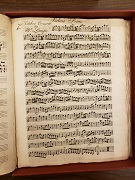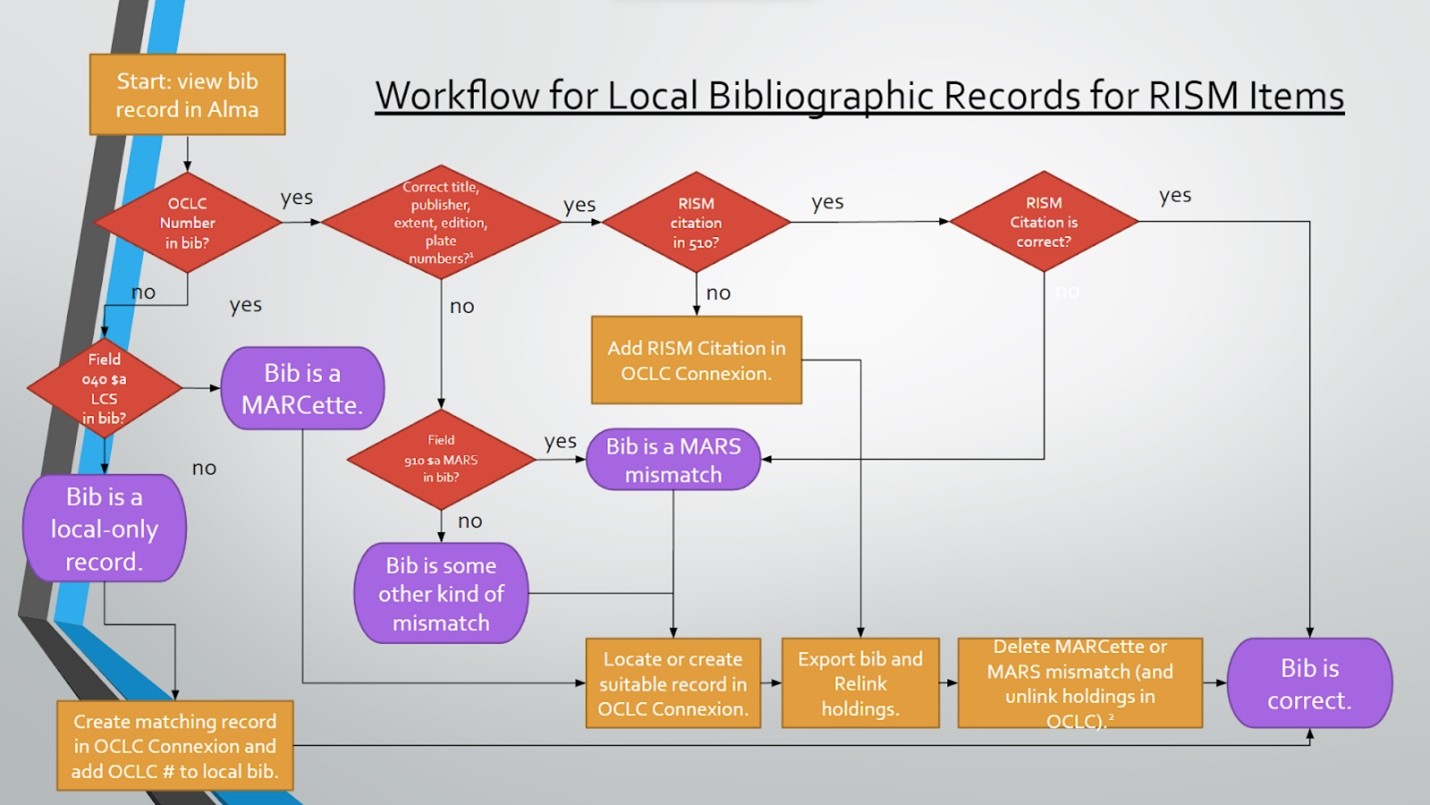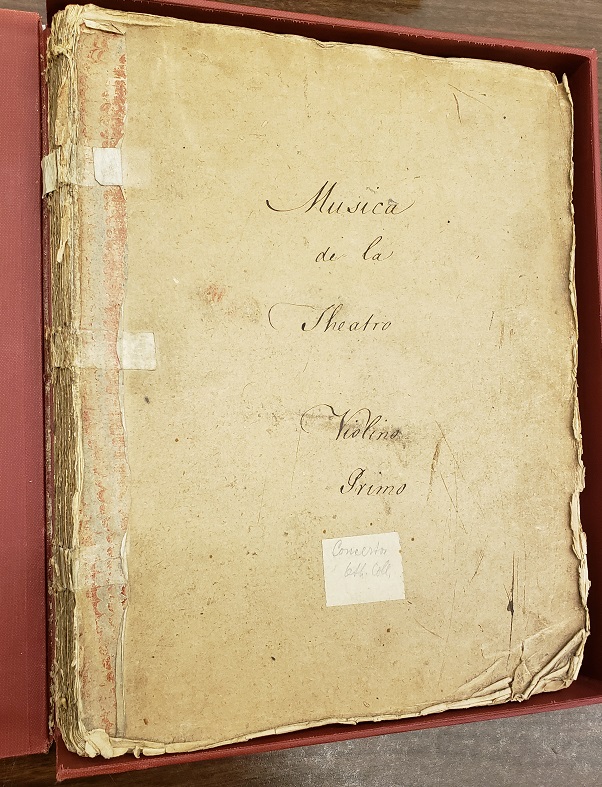RISM at the University of Illinois at Urbana-Champaign
David Floyd and Kirstin Dougan Johnson
Thursday, May 5, 2022

The following is by David Floyd, Binghamton University and Kirstin Dougan Johnson, University of Illinois at Urbana-Champaign (UIUC).
Kirstin
Some of you may recall my presentation at IAML 2018 in Leipzig where I reported on the early findings of my institution’s work to inventory our holdings reported in RISM under the siglum US-U. This effort was prompted by repeated reference interactions with scholars from around the globe. Scholars rely on RISM to help them learn where the early treasures of the Western musical world reside. But our catalog and RISM did not seem to agree in all cases. Therefore, even with additional sources of information (such as our original RISM card file), the scholars’ requests went unmet on more than one occasion, resulting in frustration on my part and disappointment on the scholars’.
In the first phase of work, graduate students conducted an inventory in our catalog (Alma/Primo) and on our shelves of all items RISM reports we own. We found almost all of the items on our shelves and were able to verify which items are held at the Music and Performing Arts Library (MPAL) and which reside in the University’s Rare Book and Manuscript Library (RBML). Over time, some items have been relocated from MPAL to RBML and shelfmarks had not been updated in RISM. One outcome of the project was the creation of a new RISM siglum for RBML holdings (US-Urbml).
The process and findings of this work are more fully described in: Johnson, Kirstin Dougan. 2020. “Unraveling the RISM Riddle at the University of Illinois: An Inventory and Analysis.” Fontes Artis Musicae 67 (2) April-June: 119-142.
After the inventory was completed, we began the second phase of the project, to improve the records of the items in our own catalog and in the RISM catalog. We have now (almost) completed this phase.
David
The cataloging phase of this project put into action a great deal of the preparatory work conducted in the first phase of matching records in our RISM card catalog to records in both the RISM database and the UIUC Library catalog. Having successfully created this inventory, we could begin the catalog maintenance that was needed to align our catalog and RISM’s. In order to consider the catalog records linked, I needed to establish cross-references between them. In our local catalog (as well as in OCLC’s WorldCat) MARC records, a 510 field Citation/Reference Note was used to reference the holdings reported in RISM’s online catalog. In RISM, I included the item’s local call number in the Shelfmark field. This ensured that whether the searcher looked in the UIUC Library catalog, or in RISM’s, there was sufficient information to identify the item, and for us to find it on our shelves. However, before these cross-references could be established, there was often significant maintenance needed to our local record, the RISM record, or occasionally both.
The most time-consuming challenges for this cataloging work were that a large number of the bibliographic records for RISM works in the UIUC catalog were either extremely minimal placeholder records, or records with erroneous information. The minimal records generally contained only the title, composer, and place of publication, and were not represented in OCLC’s WorldCat. These are locally known as MARCettes and are a remnant of the placeholder records circulation staff would create as necessary during the Library’s initial transition to a digital catalog in the 1970s. The records with erroneous information mostly resulted from a MARC Record Service (MARS) automation project conducted by the Library in 2002-3 to match these MARCettes to OCLC records. Perhaps as a consequence of the highly individual nature of items in MPAL’s special collections, many of the MARS records for music special collections items are inaccurate. Because these MARS records are linked to OCLC WorldCat, these inaccuracies had to be resolved by finding a proper replacement record or by creating such a record if one did not already exist. Quite often, original cataloging was required. Navigating these challenges while also needing to edit RISM’s records in the Muscat program led to a unique workflow for resolving errors, one that allowed me to resolve any potential inaccuracies before touching any RISM records.

The cases that I think best exemplify the advantages of the project are the often unique collections of music bound together after being printed as individual works, such as the Musica de la Theatro set of late 18th-century part books (RISM record | UIUC record). As a pair, the RISM and UIUC records for this item show how the metadata can be recorded differently to meet the specific search, discovery, and retrieval norms in each catalog. RISM’s catalog provides for easily linking the records for the individual works comprising a collection to a single parent record, whereas the structure of most academic library catalogs necessitates a choice between either one collection-level record or an array of linked records for the individual works (also known as bound-withs). As can be seen in the UIUC record, I was able to make a relatively concise collection-level record, sacrificing the granular details of the constituent works, precisely because of the linkage with the RISM catalog. These kinds of adaptations preserve the essential information needed, while also conforming to the occasionally dramatic differences between the cataloging environments.

Cover of Musica de la Theatro, a compilation of 68 works in print and manuscript. US-U MO15633. RISM ID no. 1001159459.
While this details issues that are specific to the UIUC catalog, I believe it can shed some light on what types of errors to expect when working with metadata that has been part of a library system for many decades. In these cases, classifying types of issues in the catalog is challenging, but not impossible, and it was essential for building efficiency in correcting the errors.
Kirstin
The cataloging work to date has focused on holdings in the Music and Performing Arts Library. About 1/3 of UIUC’s reported items reside at our institution’s Rare Book and Manuscript Library and those items’ local records still need to be reviewed and compared to the RISM catalog. However, as they are under different jurisdiction, this will take additional time.
Throughout the first two phases of this project, I have gained valuable knowledge of our music special collections as a whole. This includes not just a better understanding of the known RISM holdings and their details, but also discovering additional items that can be reported to RISM. Therefore, the next phases will include exploring holdings in MPAL as well as those in RBML to expand our holdings in the RISM catalog. We will also be working to digitize our unique holdings and to identify other RISM items in our collection that have not already been digitized by other holding libraries.
Although this project has not gone quickly, for a variety of reasons, I encourage all libraries with RISM holdings to embark on similar projects. Because local cataloging practices have changed over time and collections grow and shift, there are likely updates that can be made either locally or to the RISM catalog. Working to make records as accurate as possible and to make RISM as complete as possible aids scholars and librarians both.
Image, top: Johann Friedrich Lampe, “Cuckoo” Concerto (London: John Wilcox, 1740?). University of Illinois at Urbana-Champaign, Music and Performing Arts Library (US-U) MO15633. RISM ID no. 990036301.
All images courtesy of the authors.
Share Tweet EmailCatégorie: Collections de bibliothèques

